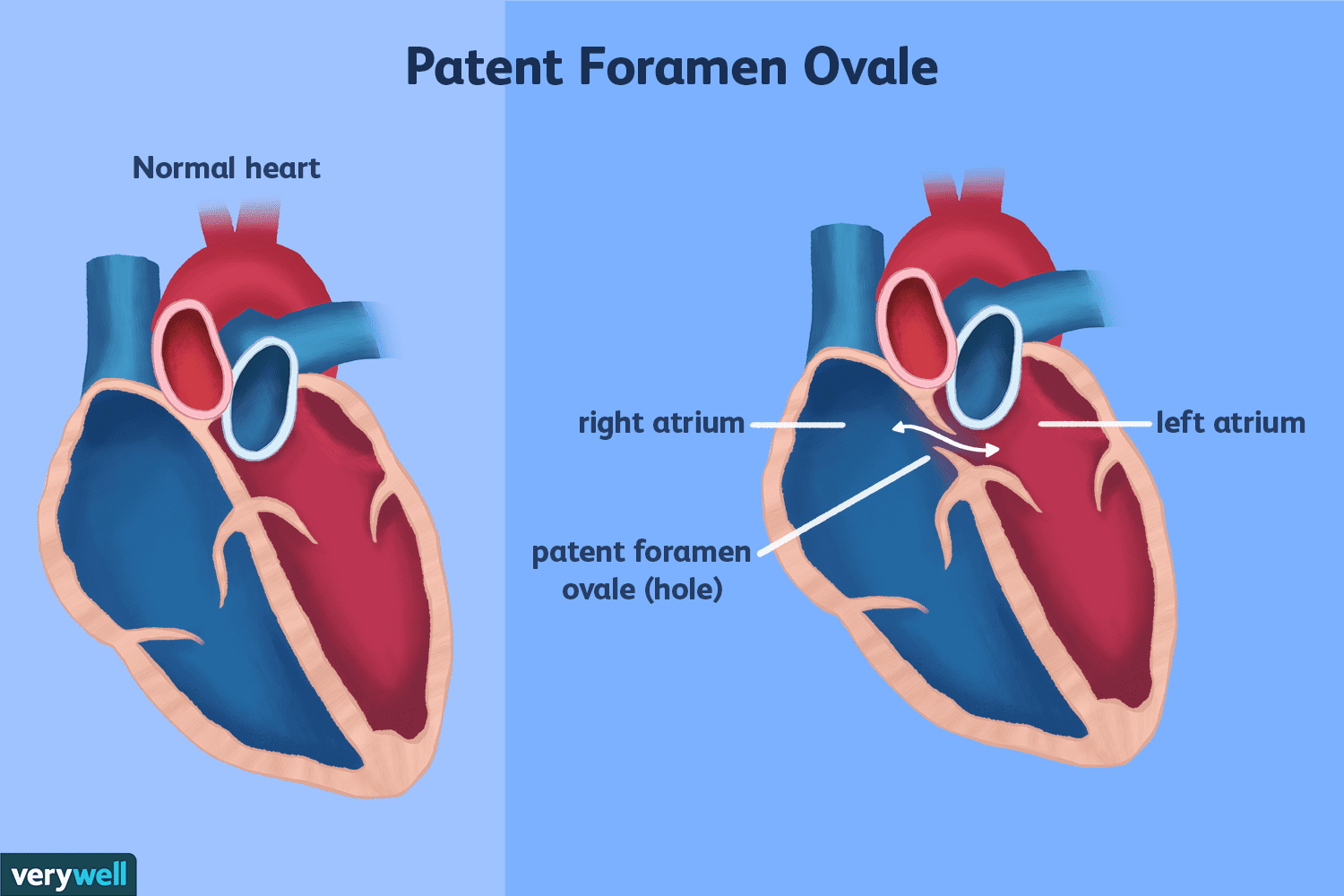
What is Patent Foremen Ovale (PFO)?
During normal fetal development, there is a small opening in the wall between the left and right atrium or upper chambers of the heart. This normal opening allows blood to detour from the lungs into the left atrium prior to birth. This opening usually closes naturally soon after birth or within the first or second year of life. If the opening fails to close soon after birth, it is referred to as a patent foremen ovale.
The diagnosis of patent foremen ovale can usually be established by performing echocardiography (various ultrasound examinations of the cardiac structures).
Most people with patent foremen ovale don’t know they have the condition since they do not have symptoms. This condition is not treated unless other heart abnormalities exist or if you had a stroke caused by a blood clot to the brain.
There is some concern and studies to suggest that patent foremen ovale is a risk factor for stroke. The reason for this is that blood clots can sometimes travel from veins in the legs to the right side of the heart and across the PFO to the left side of the heart. The blood clot may then travel to the brain and interrupt blood flow.
What is Atrial Septal Defect (ASD)?
An ASD is a congenital defect in the septum or wall between the left and right atrium. These septal defects are sometimes called a “hole” in the heart.
Atrial septal defects can vary in size and location along the septal wall. Smaller atrial septal defects may close naturally early in life. A large defect or untreated, long-standing atrial defect can cause damage to the heart and lungs.
Some patients with small atrial septal defects do not have symptoms. With large or long-standing atrial septal defects, symptoms may include shortness of breath, palpitations, edema (swelling of legs, feet or abdomen), and fatigue.
One of the main clinical signs is a heart murmur heard through a stethoscope. The diagnosis of atrial septal defect can usually be established by performing echocardiography (various ultrasound examinations of the cardiac structures).
Percutaneous closure of ASD and PFO
Catheter-based procedures are more commonly used to treat heart related problems such as narrowed coronary arteries. A catheter approach can also be used in the closing of openings associated with atrial septal defects and patent foremen ovales.
There are special closure devices available today. The percutaneous closure of ASD and PFO is performed in a Cath Lab. A catheter with a special closure device attached is inserted into a vein in the leg and advanced into the heart. Once the catheter is in proper position near the defect, the closure device is released. The closure device effectively covers the hole like an umbrella. Over time, normal heart tissue grows over the device.
Dr. Augusto Villa serves as the primary referral resource in the Palm Beaches for percutaneous closure of PFO and ASD.
